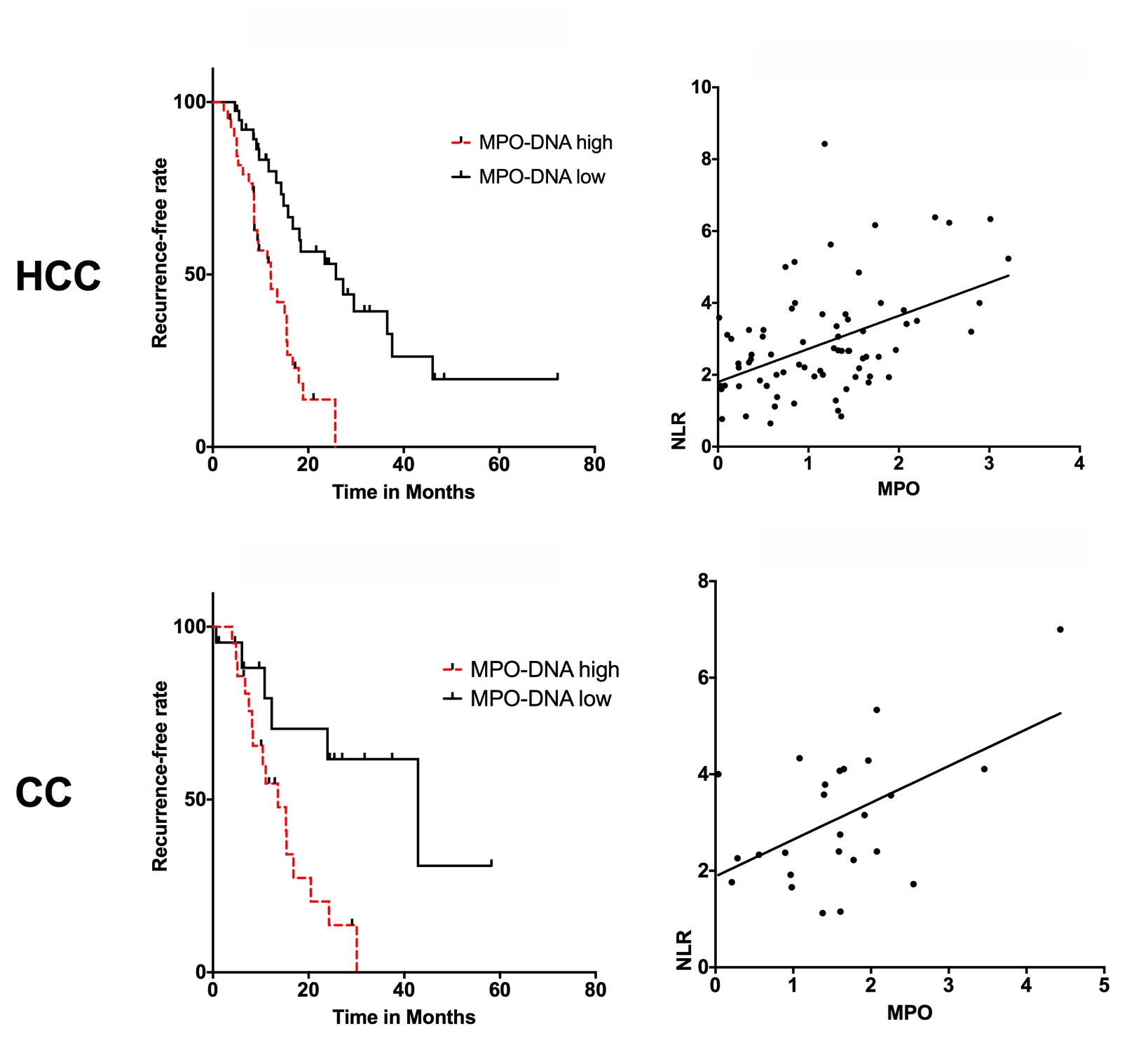C. T. Kaltenmeier1, S. Tohme1, H. Yazdani1, D. Van Der Windt1, H. Huang1, A. Tsung1 1University Of Pittsburgh,Surgery,Pittsburgh, PA, USA
Introduction: A systemic inflammatory state is widely considered as a preoperative risk factor for outcomes in solid organ malignancies. Neutrophils have been known to play an important role during early and chronic inflammation. Neutrophil to lymphocyte ratio (NLR) is a well-recognized sensitive measure of inflammation and high NLR levels have been linked to risk of cancer recurrence. After activation, neutrophils release their DNA into the extracellular space, referred to as neutrophil extracellular traps (NETs). This is a defense mechanism first described to trap and kill bacteria and other pathogens, however has recently been identified in the pathogenesis of inflammatory and malignant diseases. We have recently shown that neutrophil extracellular traps (NETs) play a critical rule and can promote the development and progression of liver metastases after surgical stress in mice.
The current study uses a specific neutrophil marker – neutrophil myeloperoxidase (MPO-DNA) as a measure of NET formation. MPO is released into the extracellular space during neutrophil degranulation. We hypothesize that NETs can be utilized as a biomarker determining outcomes after resection of hepatic malignancies.
Methods:
We selected 103 consecutive patients with Hepatocellular carcinoma (HCC) or Cholangiocarcinoma (CC) who underwent surgery at our institution. Preoperative serum levels were routinely collected for tissue banking. Neutrophil number and MPO-DNA levels were measured pre-surgery. We then performed log rank analysis of recurrence-free survival in patients with high vs low MPO-DNA/NLR. In addition, Pearson correlation of pre-operative MPO-DNA and NLR was performed.
Results:
Pre-therapy MPO-DNA levels are strongly associated with recurrence-free survival in patients undergoing surgery for HCC or CC. Patients with higher pre-therapy MPO-DNA were more likely to have a shorter disease-free survival compared to those with low levels. (HCC: HR: 2.909, 95% CI: 1.607 to 5.264, p<0.0001, CC: HR: 3.221, 95% CI: 1.335 to 7.773 p<0.0093). Median survival for HCC patients with high vs low MPO-DNA was significant with 12.6 vs 25.8 months. Similar results were obtained in CC patient, high vs low MPO DNA was significant with 13.6 vs 42.9 months. In addition, there is a significant correlation between pre-therapy NLR and MPO-DNA for both HCC and CC (HCC: p<0.0001, R2 = 0.22, CC: p<0.0065, R2 = 0.28) (Figure 1).
Conclusion:
Neutrophils are an important marker for hepatic cancers after resection. The current study focuses on pre-therapy levels of MPO-DNA as a prognostic marker of recurrence free survival following surgery. This study showed that high pre-therapy NET levels are indicative of poor outcomes in patients undergoing surgery for HCC and CC.
